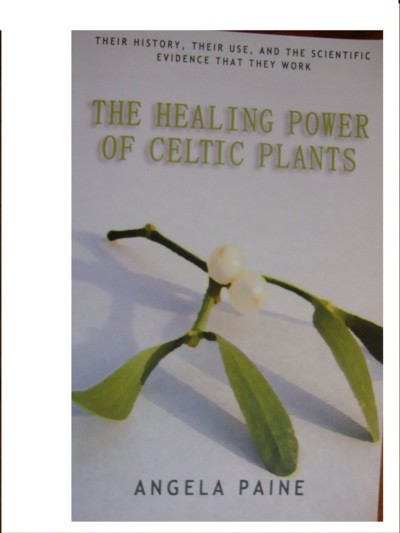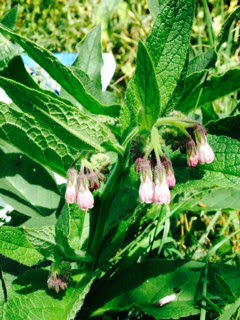Comfrey Symphytum officinalis
Pick the leaves of comfrey from the banks of streams, canals and other damp places where it likes to grow, then dip them in boiling water for a minute or so to make them soft and pliable, them wrap them around a muscle sprain, damaged tendon or fractured bone, before covering the whole area with a bandage. This will speed up healing.
You can make a comfrey ointment by adding clean comfrey leaves to oil in a saucepan, being careful not to let the oil come to the boil. The leaves will wilt and you can keep adding more until all the oil has been taken up. Strain the oil through muslin and stand upside down until all the watery part has come to the surface. Pour this away and add a few drops of essential oil of rosemary or lavender. You can transform the oil into ointment by adding a little beeswax.
There are two good reasons why you should only use comfrey externally. One is that it contains pyrollizidine alkaloids, which can be harmful to the liver if taken in large quantities, although completely harmless when applied to the skin. The other reason is because it is possible to confuse the leaves of comfrey with the leaves of foxglove when they are not in flower. Foxglove leaves contain cardioactive glycosides, which, if taken in large quantities cause dizziness, headache, coma and eventually death. Again foxglove leaves do no harm if applied to the skin. They probably do not do much good either.










